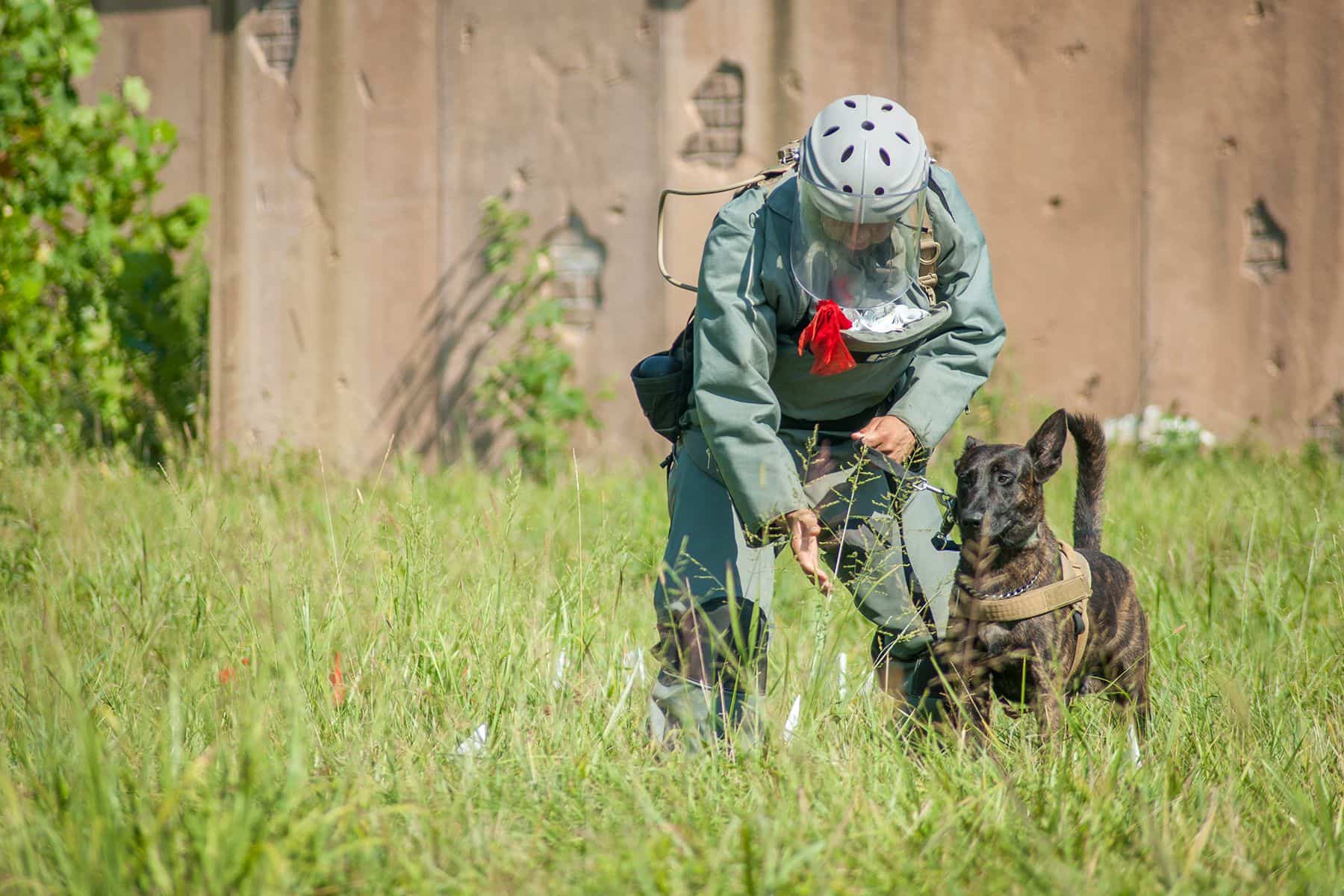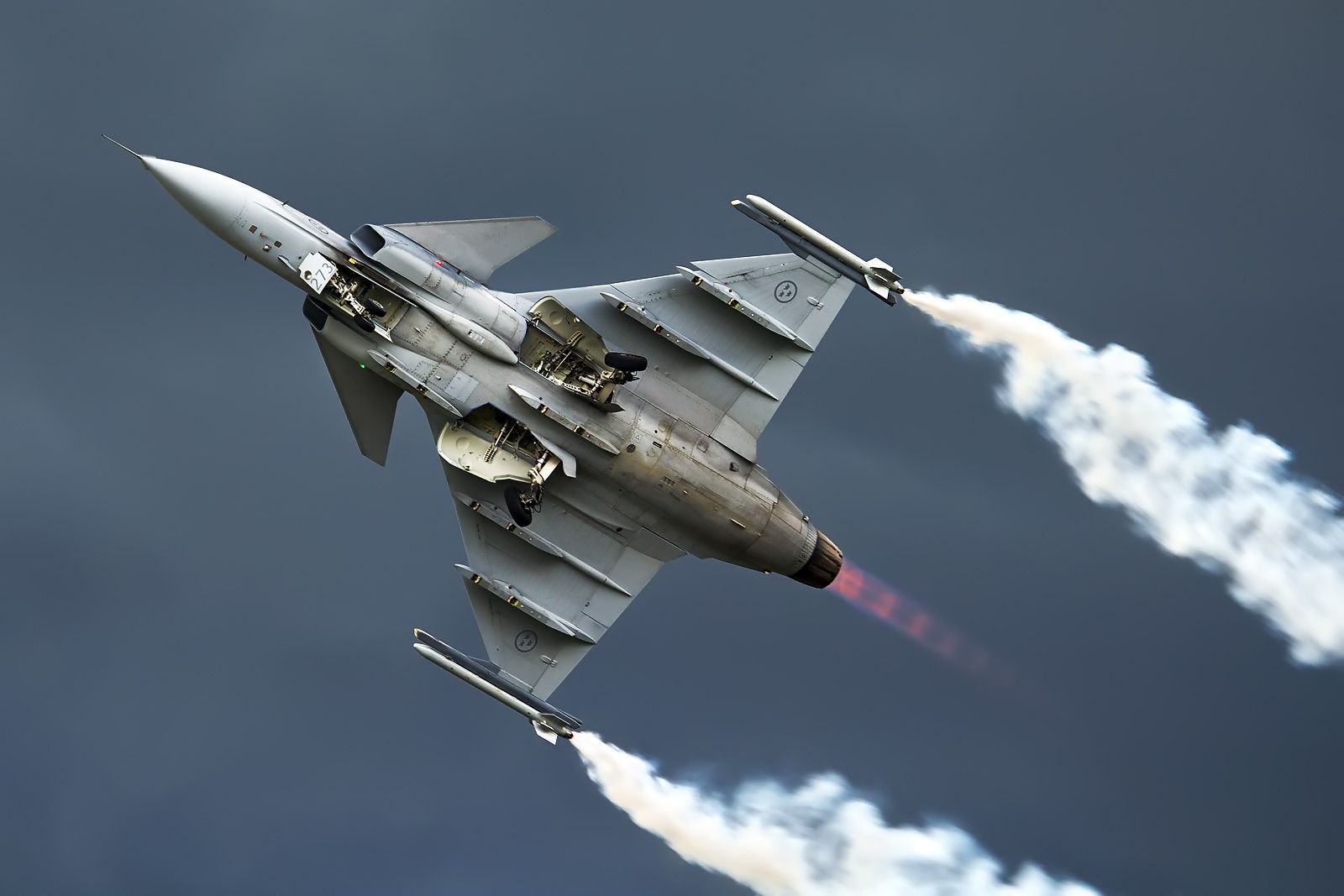All engineer Soldiers train at Fort Leonard Wood, even the four-legged ones.
Fort Leonard Wood is home to the Combat Engineer Mine Detection Dog Handlers Course, where combat engineers are trained side-by-side with mine detection dogs, said Sgt. 1st Class John Martin, course noncommissioned officer in charge.
The 708-hour course, which earns the engineer the additional skills identifier of K9, begins by pairing one Soldier with multiple dogs to find the right combination to make a good team, Martin said.
“(This course is) just as much teaching the engineers how to handle the dogs as it is teaching the dogs how to do the job,” Martin said.
While the origins of the Army K9 program can be traced back to World War II and again in Vietnam, the current mine detection dog program has only been around since 2005. Following the example of the British army and their mine-detection program, the Army initiated its own program. By 2006, the Combat Engineer Mine Detection Dog Handlers Course was in full operation at Fort Leonard Wood, said Andrew Sinclair, a retired British dog handler and current trainer at the course here.
The first phase of training includes theoretical work with the dogs to help determine if the dogs are capable of learning the skills needed to do their jobs, Sinclair said.
The theoretical side for the handlers is learning care, capabilities, limitations and standards for the dogs.
“They do some pretty intense theoretical stuff before the course really starts,” Sinclair added.
From there, the course uses the natural instincts of the dogs to train them on scent detection, the first step to see if the dogs are able to do this job, Martin said.
Sinclair said the handlers are focused on giving the dogs commands, how to keep the dogs motivated, how to reward them and the basic care of the dogs.
“As the dog learns, the handler has to learn at the same pace,” Sinclair said.
Included in the six phases of training is one “intense” week, where the Soldiers learn first aid for the dogs, Sinclair said. Once they learn those skills, they are tested to ensure they are ready to move on to the next phase of training.
Engineer dog teams are capable of performing area clearance, delineation of minefield boundaries, route clearance, clearance verification, creation of safe lanes for clearance start points, and search pockets of land that are unreachable by mechanical clearance devices. Both Martin and Sinclair said these capabilities are just the tip of the iceberg when it comes to what the dogs can provide for the Army.
“They actually look for other things than just mines,” Martin said, adding they have multiple capabilities.
“The biggest thing is it doesn’t have to be any one situation,” Sinclair added. “A dog can adapt to any of the situations. Any mission that is going on out there, a dog can be at the front to ensure the mission is accomplished or on standby just in case something goes wrong.”
Sgt. David Cannon, a student who recently graduated the course, agreed.
“Most of our equipment is good, but nothing has the same capabilities as the dogs,” he said.
Cannon said he is looking forward to deploying with his dog so he will be able to make a difference for Soldiers on the battlefield.
“A lot of Soldiers will follow a dog they know can find odor fearlessly,” he said.
Martin said that was one of the reasons this course exists.
“One thing this course can bring is more Soldiers coming home. That’s what we are here for,” he said. “Utilizing us will save more Soldiers on the ground.”
Upon graduation from the course, the dog teams are assigned to the 94th Engineer Detachment, 5th Engineer Battalion, at Fort Leonard Wood, the only combat engineer unit with mine-detection dogs in the Army and Department of Defense.











